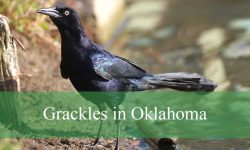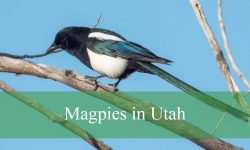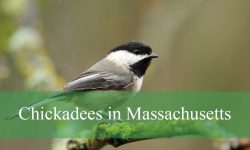Colorado is home to three species of rattlesnakes, each adapted to different regions of the state. From grasslands and foothills to rocky canyons and sandy plains, these snakes play an important role in controlling rodent populations and maintaining ecological balance. Despite their venomous nature, rattlesnakes are generally shy and avoid human contact whenever possible.
This guide highlights the prairie rattlesnake, the midget-faded rattlesnake, and the western massasauga, providing detailed information on their appearance, behavior, habitat, and unique traits. Understanding these fascinating reptiles can help you appreciate their role in Colorado’s ecosystems while staying safe in rattlesnake country.
Types of Rattlesnakes in Colorado
Prairie Rattlesnake (Crotalus viridis)
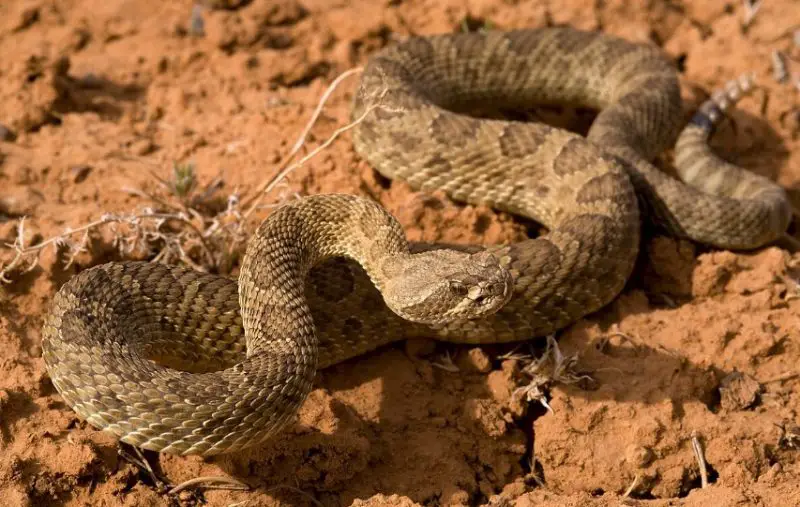
The prairie rattlesnake is the most widespread rattlesnake species in Colorado and can be found across grasslands, foothills, and rocky outcrops at elevations below 9,500 feet. Adults typically measure between 3 and 5 feet in length, with a thick, muscular body covered in keeled scales. Its coloration ranges from light brown or olive to greenish-gray, patterned with bold, dark dorsal blotches that help it blend into its environment. It has the classic pit viper features: a broad triangular head, vertical slit pupils, and heat-sensing pits on each side of the face, which help detect warm-blooded prey even in low-light conditions.
Prairie rattlesnakes are primarily ambush predators, lying in wait for rodents, ground squirrels, rabbits, and occasionally birds and lizards. They are active from spring through fall, most frequently seen in the early morning or evening when temperatures are cooler. During the heat of the day, they take shelter in burrows, rocky crevices, or shaded areas to avoid overheating. They are generally shy and will try to escape when disturbed, but they readily coil and rattle their tails as a warning if threatened.
The venom of the prairie rattlesnake is hemotoxic, designed to destroy tissue and disrupt blood clotting, which helps immobilize prey quickly. While bites can be dangerous to humans, fatalities are rare due to medical treatment availability and the snake’s generally non-aggressive nature. Most bites occur when the snake is accidentally stepped on or handled. Their venom also plays an important ecological role by controlling rodent populations and maintaining balance in the food chain.
A fascinating fact about prairie rattlesnakes is their ability to overwinter in communal dens. Dozens of rattlesnakes sometimes share the same hibernation site, returning to the same location year after year. These dens are often used for decades, making them significant ecological landmarks in Colorado’s rattlesnake habitat.
Midget-Faded Rattlesnake (Crotalus concolor)
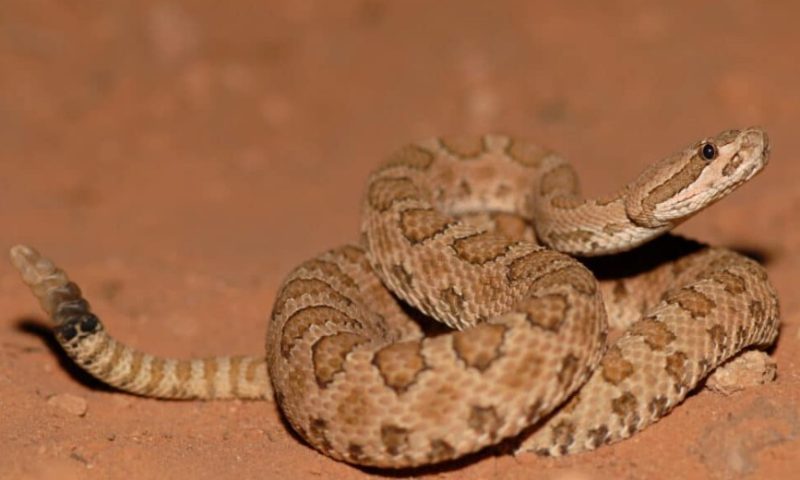
The midget-faded rattlesnake is a smaller and more secretive species found in western Colorado, especially near rocky canyons, sagebrush deserts, and high plateaus. Adults typically grow to around 16 to 24 inches in length, making them one of the smallest rattlesnake species in the United States. Their name comes from their distinctive coloration—a pale gray, tan, or faded yellow background with subtle brown blotches—that provides excellent camouflage against desert rocks and sandy soils.
Behaviorally, midget-faded rattlesnakes are extremely reclusive and rely heavily on their camouflage to avoid detection. They are primarily active in the late afternoon and early evening, although they may also move during cooler daylight hours in spring and fall. Like most rattlesnakes, they use ambush tactics to capture prey, striking quickly and retreating until the venom takes effect. Their diet consists mainly of small mammals, lizards, and occasionally birds.
Despite its small size, the midget-faded rattlesnake has highly potent venom. Its venom is a complex mix of hemotoxins and neurotoxins, capable of immobilizing prey very quickly. For humans, bites are rare due to the snake’s elusive nature, but envenomation can be medically significant and requires prompt treatment. Fortunately, these snakes rarely show aggression unless directly threatened or handled.
A fun fact about the midget-faded rattlesnake is that it can survive in surprisingly harsh, rocky desert environments with extreme temperature fluctuations. It often uses deep rock crevices and abandoned rodent burrows to regulate its body temperature, demonstrating impressive adaptability to Colorado’s rugged western landscapes.
Western Massasauga (Sistrurus catenatus tergeminus)
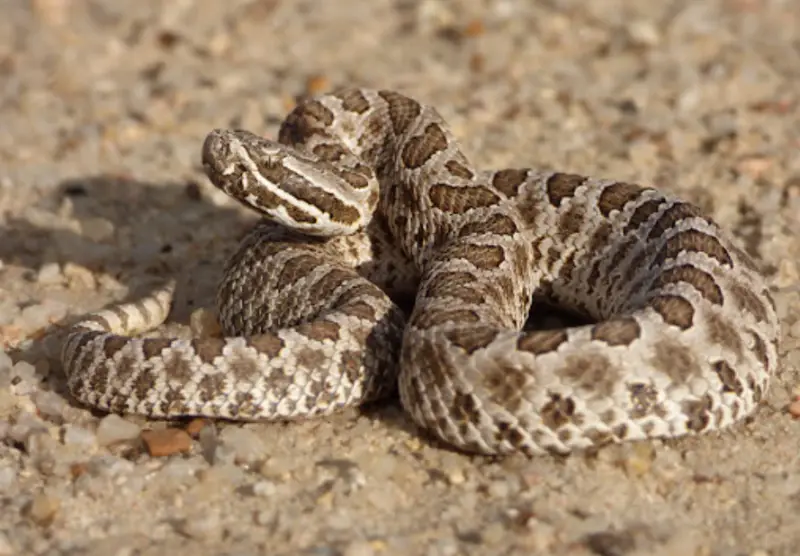
The western massasauga is the smallest rattlesnake species in Colorado, usually measuring around 18 to 30 inches in length. It has a light gray or tan background color with distinct dark brown blotches running down its back and smaller spots along the sides. Its head is broad and triangular like other pit vipers, but its rattle is much smaller and produces a softer, higher-pitched buzz compared to larger rattlesnakes.
Western massasaugas are secretive and spend much of their lives hidden under grass, leaf litter, or in burrows made by other animals. They are primarily crepuscular, meaning they are most active during dawn and dusk, which helps them avoid both predators and the hottest parts of the day. Their preferred habitats include sandy plains, grasslands, and shrubby areas of southeastern Colorado. Their diet is composed of small mammals, lizards, frogs, and insects, making them important for controlling pest populations.
The venom of the western massasauga is hemotoxic, similar to that of other rattlesnakes, causing tissue damage and disrupting blood clotting in prey. While potentially dangerous to humans, these snakes are shy and not aggressive, preferring to flee or remain motionless when encountered. Most bites occur when they are accidentally stepped on, as their camouflage blends well with dry grasses and soil.
A fun fact about the western massasauga is its unusual overwintering behavior. It often hibernates in crayfish burrows or other underground cavities, taking advantage of the stable temperatures and moisture levels below ground. This behavior highlights its adaptation to the drier, open habitats of southeastern Colorado, where few other rattlesnakes thrive.
FAQs About Rattlesnakes in Colorado
How many types of rattlesnakes live in Colorado?
Colorado is home to three rattlesnake species: the prairie rattlesnake, the midget-faded rattlesnake, and the western massasauga.
Are rattlesnakes in Colorado dangerous to humans?
Yes, all three species are venomous, but they are generally shy and bites are rare. Most incidents occur when snakes are accidentally disturbed.
Where are rattlesnakes commonly found in Colorado?
Prairie rattlesnakes are widespread, midget-faded rattlesnakes inhabit western canyons, and western massasaugas live in southeastern grasslands.
What should you do if you see a rattlesnake in Colorado?
Stay calm, give the snake space, and back away slowly. Do not attempt to handle or provoke it, as most bites happen when snakes feel threatened.
Do rattlesnakes hibernate in Colorado?
Yes, all three species hibernate during the winter, often in communal dens or burrows, emerging in spring as temperatures rise.

